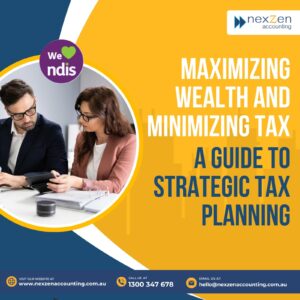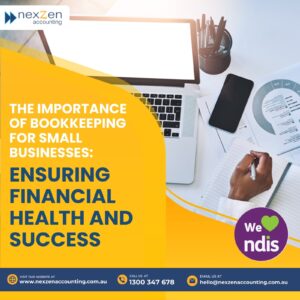We recently had a call from a client we’ll call Oliver. He didn’t realize his business qualified as a community service provider or that he needed to register for QLeave. To tell the truth, Oliver hadn’t really given QLeave much thought at all. He was too busy worrying about more important things—like cash flow!
When Oliver called us in a panic, we quickly explained QLeave and helped him become compliant. But it made us realize: What if other clients need help, too?
So, we created this guide to QLeave for NDIS service providers. It includes everything you need to know about QLeave. And if you have a specific question that’s not in this guide, just let us know! We’re here to help. Let’s get started.
What is QLeave?
QLeave is portable long service leave. (QLeave technically refers to the organization that provides the portable long service leave, but most people use QLeave and portable long service leave interchangeably.)
It’s available for NDIS workers in Queensland to help with a common complaint regarding long service leave. Typically, long service leave is for workers who stay with an employer for an extended time—maybe 10 years or more. Unfortunately, many NDIS workers were unable to take advantage of long service leave for various reasons that are specific to certain industries (such as community service providers and construction workers).
For example, many NDIS workers are under contract and switch employers often. Others are sole traders. In these situations, the workers aren’t usually entitled to standard long service leave because they don’t work for one employer long enough to qualify. By comparison, QLeave is portable, meaning it transfers from one employer to the next—as long as the worker stays within the NDIS industry.
Of course, the rules can be confusing for NDIS employers, but we’ll explain everything you need to know.
What are the requirements for NDIS employers?
If you’re an NDIS employer, you’ll need to register your workers for QLeave. You can start the application here. You just need your basic business info and ABN to submit the application. You’ll also need to file employer returns each quarter.
While neither of these tasks are difficult, we realize they may feel overwhelming when you already have so much on your daily “to do” list. We’ll give you the important info in this guide, but please let us know if you need help.
Which employers must register for QLeave?
Employers in the community services industry must register for QLeave. This includes everything from child safety and support services to financial counselling services. You can find the full list here. Note that this doesn’t include childcare or aged care services if you’re a standalone provider. If you offer chilcare services as part of your other community services, though, your childcare workers are eligible for QLeave.
Do employers pay for QLeave?
Yes, employers must pay 1.35% of each worker’s ordinary wages. We realize this may be a significant expense for your business. If you need help building revenue or managing your budget, please let us know. QLeave compliance is important, but there are ways to ensure you’re meeting your obligations without crippling your business financially.
When is QLeave due?
Your quarterly returns are due on the 14th day of the following month. For example, the first quarter begins 1 January and ends 31 March. So, your return and levy are due 14 April. You can find the full schedule here. You may file the return online.
When does QLeave go into effect?
QLeave started 1 January 2021. All employers with eligible workers are required to submit quarterly returns now. If you haven’t filed any QLeave returns yet, please let us know ASAP. We can help you get caught up and in compliance, even if you don’t know where to start. Please don’t worry about something we can help you resolve quickly.
Do employers still need to pay long service leave?
Yes. If your workers qualify for regular long service leave, you still need to make those payments. However, you can apply for reimbursement from QLeave as long as the payment was within the last three months. You’ll find the reimbursement form when you log into your QLeave account. If you need help applying for QLeave reimbursement, please let us know. The process isn’t necessarily complicated, but the rules can be confusing.
How nexZen Can Help
As an NDIS service provider, you have a lot of responsibilities. The very nature of your job is often emotionally draining, and the extra steps required to stay in compliance may sometimes feel like too much to bear.
But you can’t avoid important tasks like QLeave. In fact, QLeave may check your records whenever they like. Compliance is important if you want to avoid fines, penalties, and unnecessary stress. We can help.
NexZen works with NDIS service providers (like you!) to ensure your accounting practices are in tip-top shape and you’re in full compliance with all Australian laws. More importantly, we’re focused on your business’s financial health and your personal health, too. Business owners work best when they’re refreshed and excited about their work. Please don’t let a small compliance issue become a looming threat. Contact nexZen for personalized information about your business’s QLeave requirements today.









